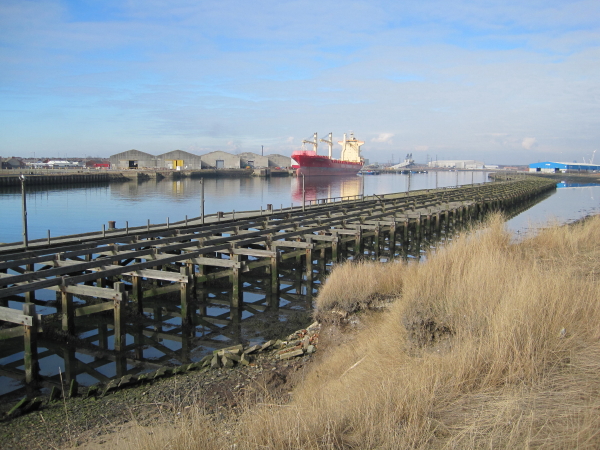Topics > Transport and Travel > Staiths > Staiths on the Tyne - Historical Account
Staiths on the Tyne - Historical Account
Extract from: The Life of George Stephenson and of his son Robert Stephenson, by Samuel Smiles, 1881.
The coals, when raised from the pits, are emptied into the wagons placed alongside, from whence they are sent along the rails to the staiths erected by the river-side, the wagons sometimes descending by their own gravity along inclined planes, the wagoner standing behind to check the speed by means of a convoy or wooden brake bearing upon the rims of the wheels. Arrived at the staiths, the wagons are emptied at once into the ships waiting alongside for cargo. Any one who has sailed down the Tyne from Newcastle Bridge can not but have been struck with the appearance of the immense staiths, constructed of timber, which are erected at short distances from each other on both sides of the river.
The "Lads Belaw" < Smiles, 1881 > Keels on the Tyne

Co-Curate Page
Staiths
- Staiths are elevated platforms for discharging coal and other materials from railway cars into collier ships for transport. From the mid 18th century onwards, many staiths were built on the …

Co-Curate Page
Dunston Staiths
- Overview About Dunston Staiths Timeline Map Street View "Dunston Staiths on the River Tyne is believed to be the largest timber structure in Europe, at its height, 5.5m tonnes of …

Co-Curate Page
Waggonways
- "In the early 1600s a Nottinghamshire businessman called Huntingdon Beaumont came to Northumberland and laid rails from collieries near Blyth to a shipping point on the coast. His wooden waggonway …


Co-Curate Page
Staiths
- Staiths are elevated platforms for discharging coal and other materials from railway cars into collier ships for transport. From the mid 18th century onwards, many staiths were built on the …

Co-Curate Page
Dunston Staiths
- Overview About Dunston Staiths Timeline Map Street View "Dunston Staiths on the River Tyne is believed to be the largest timber structure in Europe, at its height, 5.5m tonnes of …










